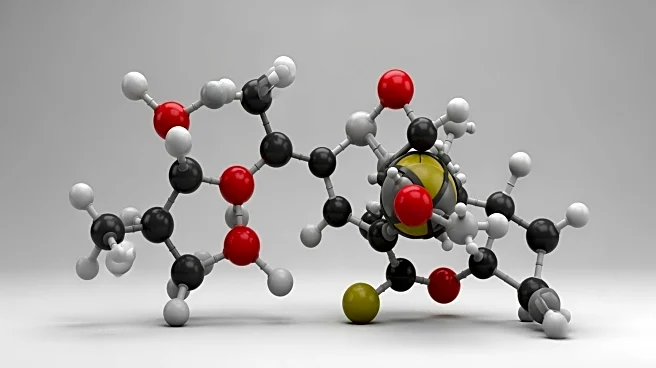What's Happening?
A recent study published in Nature has detailed the photochemical rearrangement of isonitriles via energy transfer catalysis. Researchers developed the di-π-ethane rearrangement of cyano functional groups
through a five-membered ring transition state, overcoming limitations of classical photochemical rearrangements. The study demonstrated two types of rearrangements: di-π-ethane and di-π-propane, facilitated by energy transfer catalysis under visible light conditions. The research highlights the successful synthesis of various cyclic architectures with high yields, showcasing the broad applicability and functional group tolerance of these rearrangements.
Why It's Important?
This study represents a significant advancement in the field of photochemistry, offering new methods for rearranging isonitrile functional groups. The ability to efficiently produce cyclic architectures with high yields could have implications for the synthesis of complex organic compounds, potentially benefiting industries such as pharmaceuticals and materials science. The research also expands the understanding of energy transfer catalysis, which may lead to further innovations in chemical synthesis and reaction mechanisms.
What's Next?
The findings from this study may inspire further research into photochemical rearrangements and energy transfer catalysis. Scientists and researchers could explore additional applications and optimizations of these methods, potentially leading to new synthetic pathways and chemical products. The study's insights into reaction mechanisms may also influence future developments in photochemistry and catalysis.
Beyond the Headlines
The study's exploration of photochemical rearrangements raises questions about the environmental and safety implications of using visible light-driven processes in chemical synthesis. As researchers continue to develop these methods, considerations regarding energy efficiency and sustainable practices will be crucial. The potential for these rearrangements to impact various industries also highlights the need for interdisciplinary collaboration and innovation.











